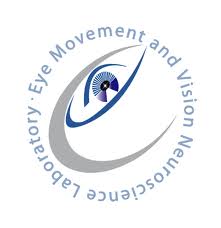Dr. Agnes Wong and her research group in Canada have been doing some excellent research in amblyopia. You can get a feel for their publications, many of which are available as PDFs here. Publication #61 introduces the concept of Fusion Maldevelopment Nystagmus, or FMNS. It is that syndrome that is the subject of a fascinating article by Dr. Eileen Birch and colleagues in the current issue of JAAPOS entitled Fixation Instability in Anisometropic Children With Reduced Stereopsis. I’ll cut right to the chase of the article’s conclusion as it’s presented in the abstract: Our data support the hypothesis that the binocular decorrelation caused by anisometropia can disrupt ocular motor development, resulting in FMNS and its temporalward re-foveating “flicks” that may mimic microstrabismus.
Now once upon a time we thought that patients with amblyopia due to uncompensated hyperopic anisometropia, or a difference in power between the two eyes, weren’t as challenged as patients with amblyopia due to strabismus. Turns out this may not necessarily be the case, and with regard to binocular decorrelation and fixation instability, reduction in stereoacuity may be even more important than a reduction in visual acuity between the two eyes as an index of compromised visual function. So why did I tease you with the title of this blog as cloud computing? Well, if you want to get a really good idea of fixation stability through the amblyopic eye, you can employ a procedure as Birch and her colleagues did using microperimetry. Here’s essentially how it works.
The MP-1 is a commercially available microperimeter that is Nidek’s version of a scanning laser ophthalmoscope, combining digital fundus photography with computerized perimetry. As the child was asked to maintain focus for 30 seconds on a red circle inside the instrument, the camera maps out the cloud of fixation points over time. When this study looked at 94 children between ages 5 and 13 who had hyperopic anisometropia, they found that those children with reduced or absent random dot stereopsis had significantly more fixation instability than those who had normal random dot stereopsis findings. An example of MP-1 data obtained from three children with hyperopic anisometropia during the 30 second period of fixation can be accessed here.
Frame A shows a child with stable fixation, having nearly all fixation points inside a 1 degree circle around the macula. Frame B shows a more typical chid with anisometropia, having moderate instability, and frame C shows a child with extreme fixation instability. It’s a nice way of quantifying what we might otherwise refer to as central, unsteady fixation. As opposed to eccentric fixation, which most often exists in microstrabismus, fixation time-averages being central in the more hyperopic eye in refractive amblyopia, but the motor disturbance or instability is enough to disrupt stereopsis. This is yet another reason why stereopsis has to be looked at much more deeply than as simply an epiphenomenon of binocular vision. More on that in Part 2.



Pingback: Cloud Computing in Amblyopia – Part 2 | The VisionHelp Blog
Pingback: Cloud Computing in Amblyopia – Part 3 | The VisionHelp Blog
Pingback: Cloud Computing in Amblyopia